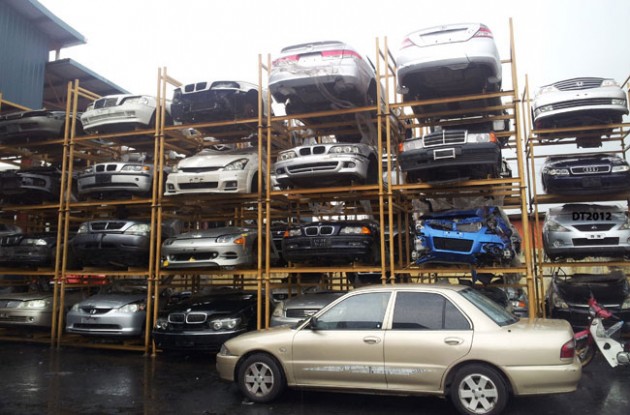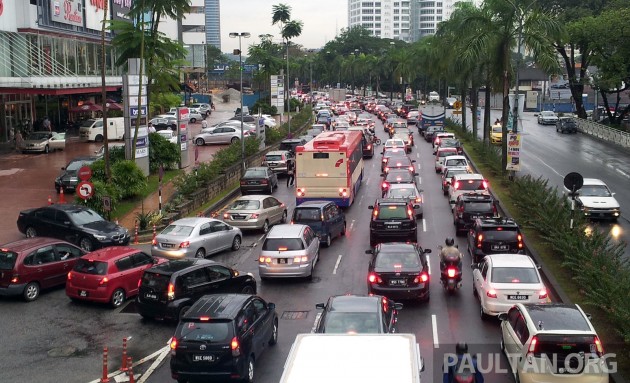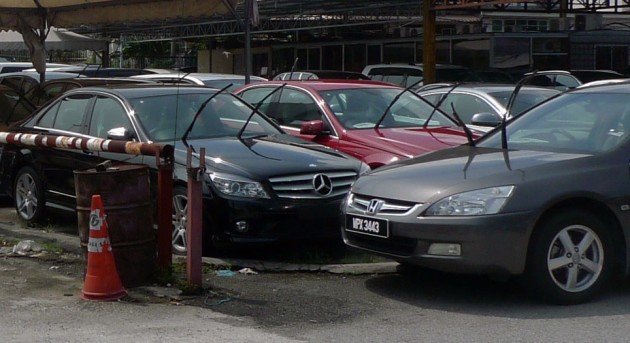The Malaysian Automotive Association (MAA) is pushing for a scrappage scheme for old cars as annual vehicle sales surge past the 600,000-unit mark, according to Berita Harian.
President Datuk Aishah Ahmad told the Malay daily that it has already proposed for the implementation of such a policy to the government to ensure there is an orderly way to retire cars that are no longer safe from the roads in the long term. She added that a vehicle scrappage scheme has to be formulated thoroughly to ensure all makes and models are accounted for.
“[Translated] There needs to be a scheme that enables old cars to be disposed appropriately backed by vehicle scrappage guidelines dictated by the government,” said Aishah. “This will ensure that only vehicles in good condition and that are environmentally friendly remain on the roads, contributing to a safer and cleaner traffic environment.”
The rising number of new vehicles on the road every year is said to have been the main cause of congestion – especially in large cities – but it is not the only reason. According to Aishah, other contributing factors include poor city planning, inadequate road infrastructure and maintenance, low enforcement and an incomplete public transport system.
MAA projects a total of 680,000 vehicles to be sold this year, with 598,400 of those being passenger vehicles. It expects the figure to rise to 693,000 vehicles – including 610,300 passenger vehicles – in 2015. The total industry volume (TIV) in the first six months of 2014 is 333,142 units, 6.3% or 19,654 units higher than the same period last year.
Aishah said that in that same period the passenger vehicle segment recorded positive growth compared to 2013. Sales of passenger vehicles rose 7.5% or 20,788 units, while sales of commercial vehicles dropped 3% or 1,134 units to 36,363 units.
Meanwhile, an automotive analyst said that Malaysia being among one of the main producers of passenger cars should have a end-of-life vehicle scrappage scheme to ensure the industry grows sustainably. “We could perhaps begin on a voluntary level first before the government makes it mandatory,” he said, adding that one effective method would be to provide an incentive for owners to trade in their old cars for new ones.
Another analyst who also declined to be named believed a scrappage scheme will also help address the abandoning of used cars. He said the government has to revise its tax structure, in particular excise duties that are currently imposed on new cars at a rate of between 65% and 105%, to ensure the effectiveness of such a scheme.
“The reduction of excise duties will enable new cars to be sold at a lower price, enabling buyers to shorten their installment plan durations and dispose their cars after a certain period,” he said.
He added that lower new car prices will also ensure that used car prices will be lower, providing more choices for people who are unable or unwilling to be in debt by buying a new car.
The report mentioned that a number of developed countries including Japan and the United States already have a scrappage scheme for vehicles older than 15 years. It also claimed that the implementation of a scrappage policy will provide benefits across the country’s economy.
This isn’t the first time we’ve heard about such a scheme over here: MAA has suggested it before in its Budget 2013 wish list, and even the government itself proposed a Vehicle End-of-Life Policy in 2009 before a poor reception led to it being, ahem, scrapped.
Looking to sell your car? Sell it with Carro.






AI-generated Summary ✨
Comments express mixed opinions on the scrappage scheme, with many criticizing it for potentially harming low-income owners, especially the elderly and rural residents who cannot afford new cars or face high loan burdens. Several suggest focusing on improving public transportation, stricter vehicle inspections, and lowering taxes instead of mandatory scrapping. Critics argue the scheme mainly benefits auto industry cronies, raises concerns about unfair burdens, and questions whether old cars truly pose safety or environmental risks. Supporters mention older cars' durability and nostalgia, and some believe the scheme could modernize vehicle safety and emissions if properly implemented with lower taxes. Overall, sentiments highlight skepticism about the scheme's practicality, fairness, and motives, emphasizing the need for broader transportation reforms and affordability measures.